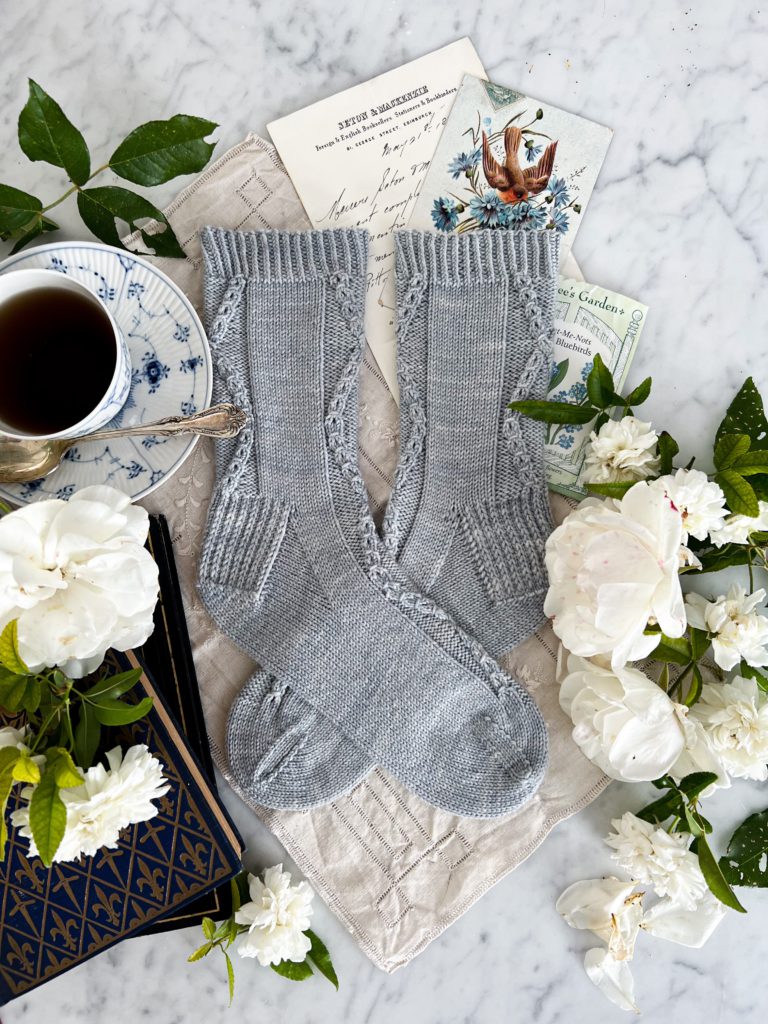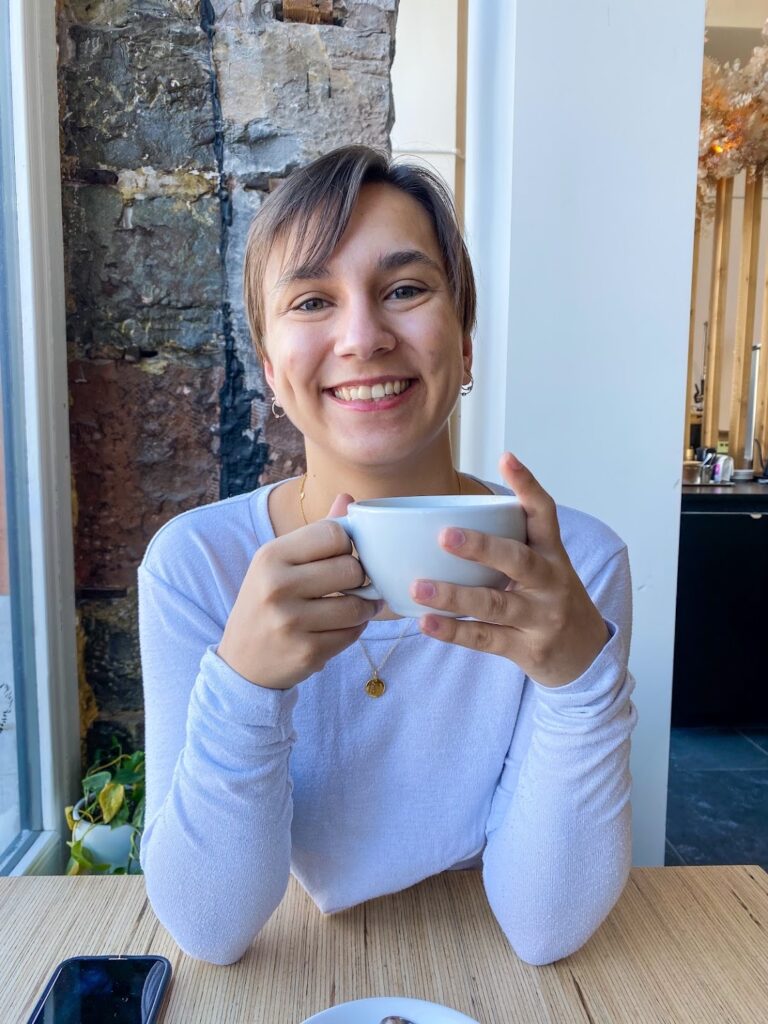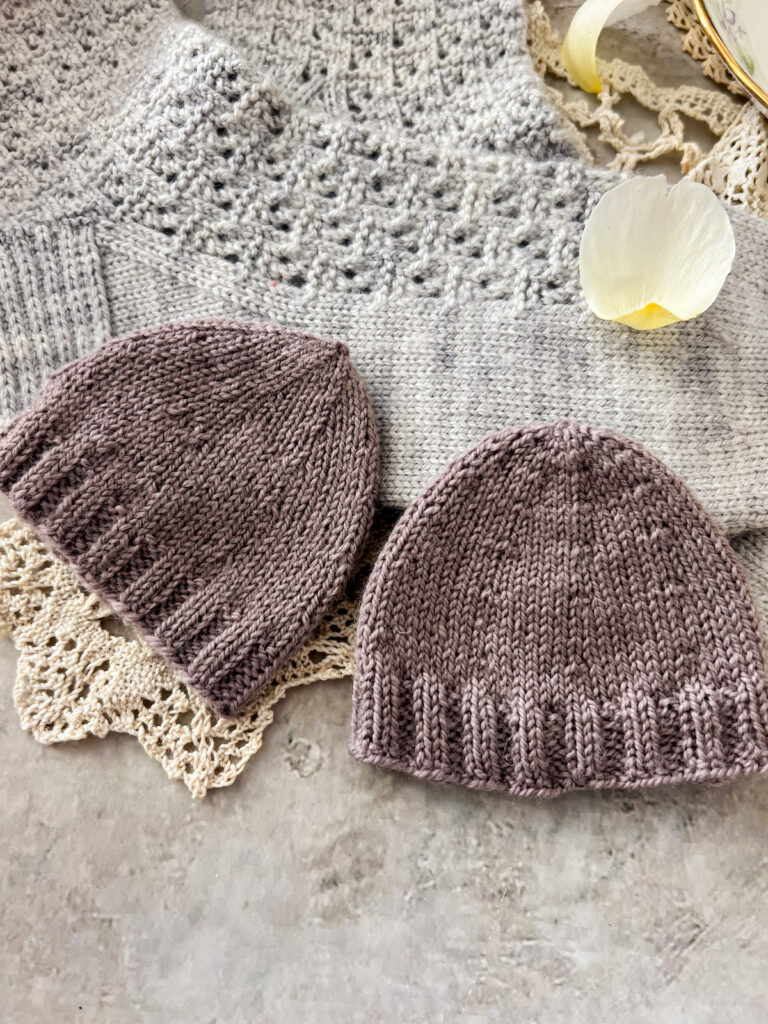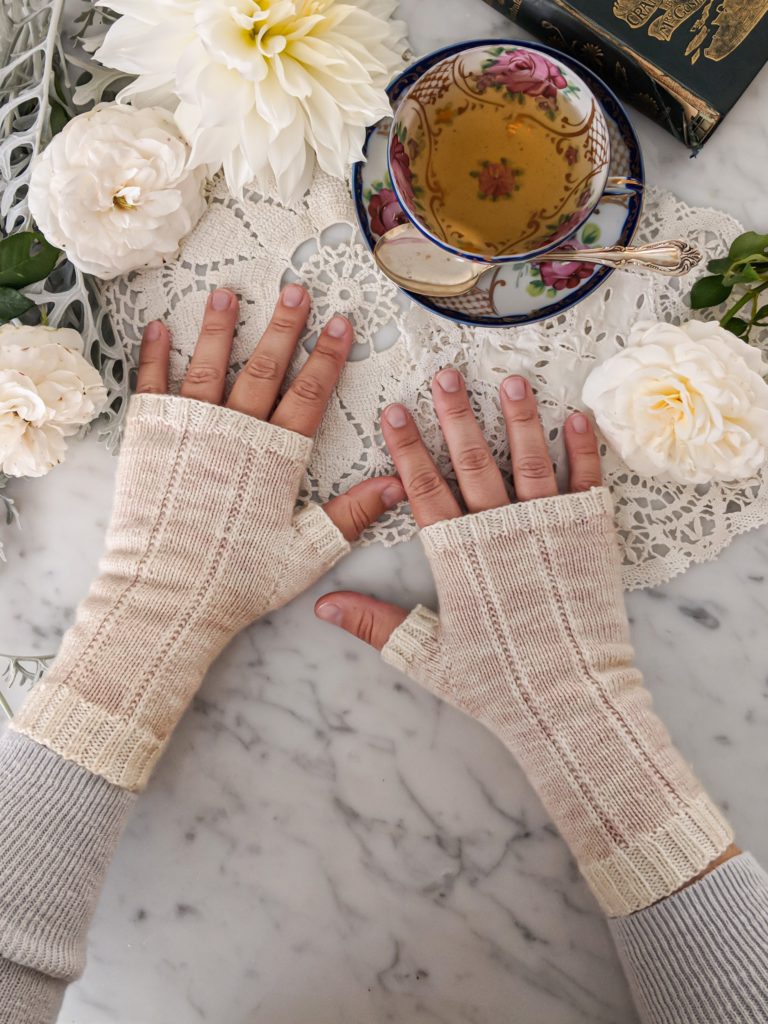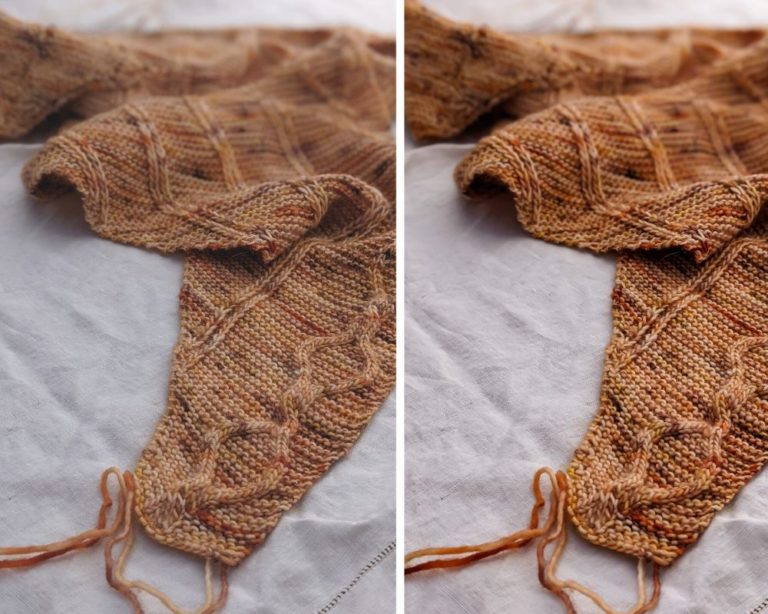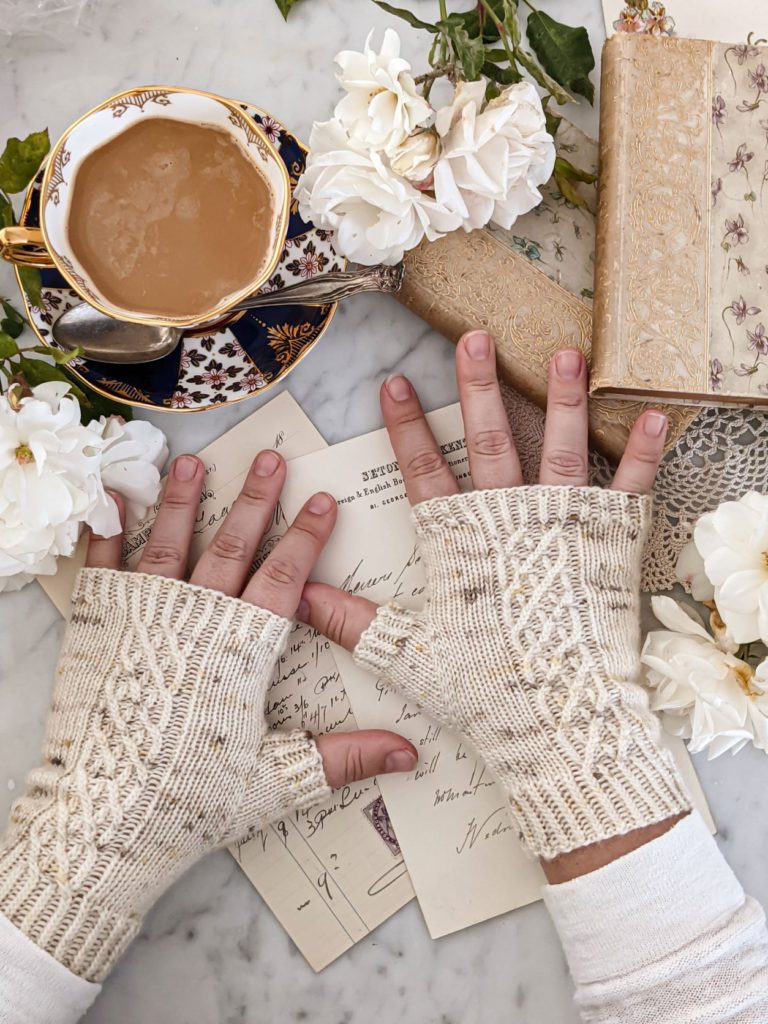It’s been a while since we’ve talked about yarn substitution around here, but today’s post is going to cover a really important topic: yarn construction. That’s because the way your yarn is made is important. A woolen spun yarn is going to knit up differently from a worsted spun yarn. Both of those, in turn, will knit up differently from single-ply yarns.
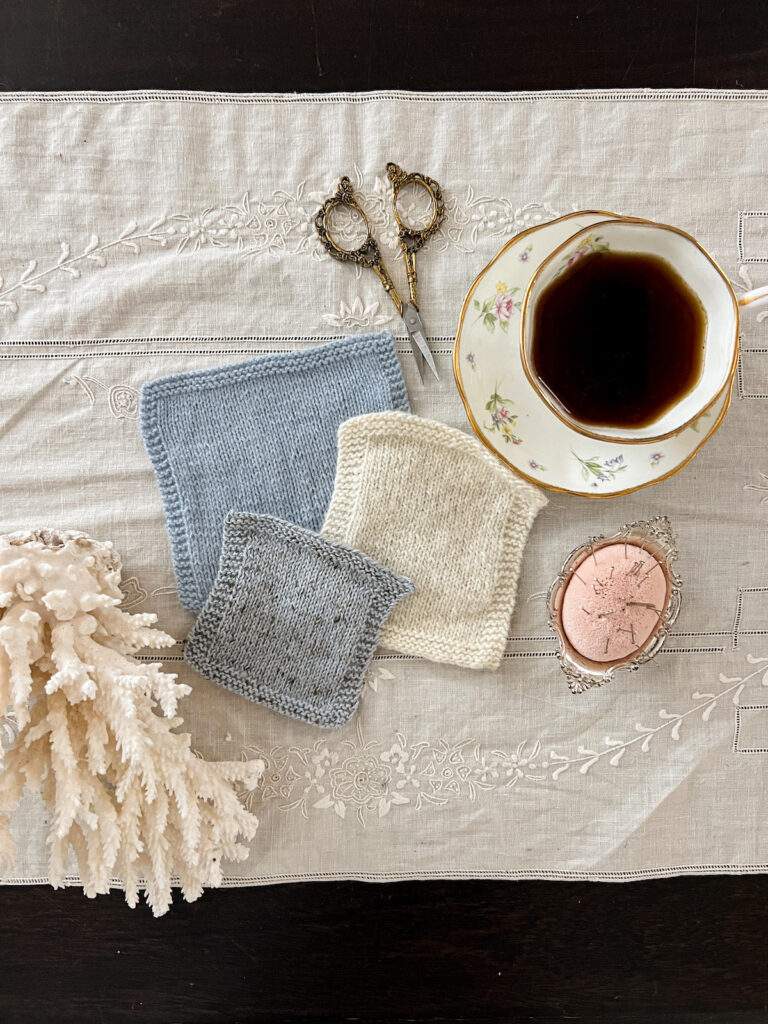
Yarn structure will determine the drape and durability of your projects. That means, if you’re looking to swap out one yarn for another, and you want your finished object to look similar to the sample photos from the pattern, you’ll need to choose a yarn that’s not only the same weight, but the same construction.
Let’s explore a bit more.
About the Yarns in this Blog Post
I knit these swatches using yarn provided to me by the folks at Universal Yarn. If you’d like to try some for yourself, you can easily click these links below. These are affiliate links, which means if you choose to buy something through those links, I’ll receive a small commission at no extra cost to you. I will always identify affiliate links for you. Thanks for supporting my work!
Yarn Vibes Emerald Isle (currently out of stock, other lovely yarns available)
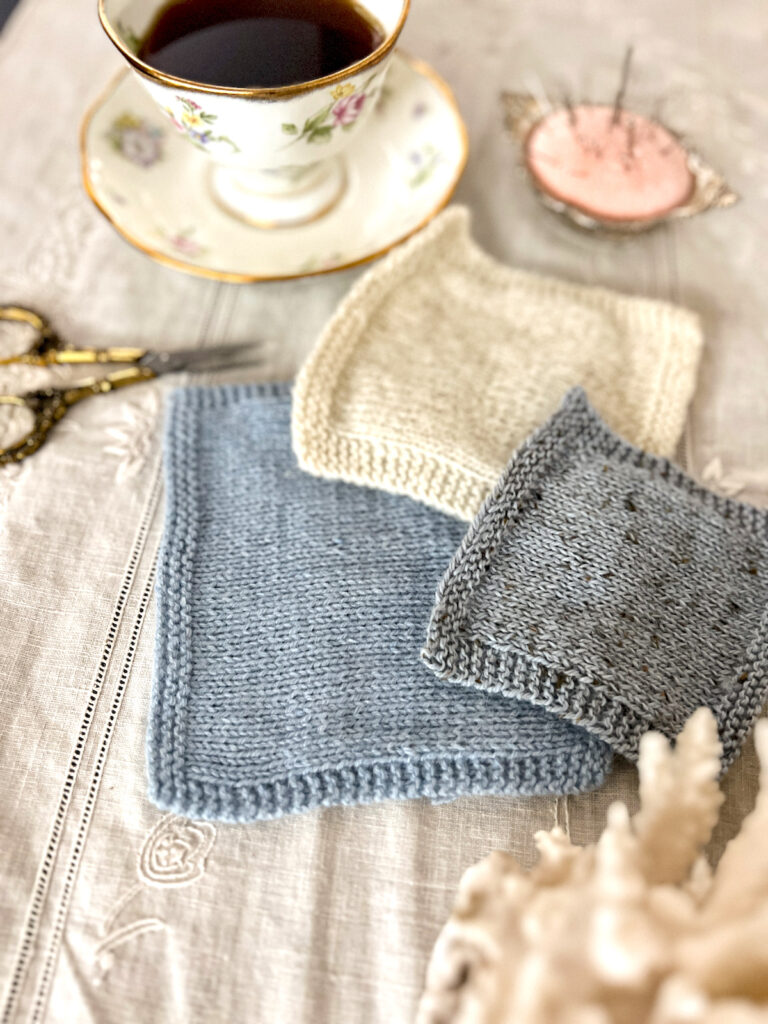
All Yarn Starts Out the Same
Just to be clear here: all yarn starts out its life as a pile of fiber. Whether it’s woolen spun, worsted spun, or single ply, that yarn is fiber before it becomes yarn.
Depending on the fibers involved, that fiber will be processed in different ways. Plant fibers need to be softened and broken down, while animal fibers usually need to be cleaned and carded. Depending on the yarn construction process, the fibers might be dyed at this stage or might be dyed after they’re spun.
These fibers then get smoothed into batts or other preparations for spinning. If you’re curious about the different forms unspun fiber can take, this blog post from Abby Franquemont is full of good info.
And now we get to the point where the yarns start to diverge. Let’s look at how the spinning process, which is the next step in making yarn that involves twisting staple fibers into long strands, can really affect the look and function of yarn. The key difference is in when the spinner takes the yarn from pile of fiber to spun fibers.
What Makes a Woolen Spun Yarn
A woolen spun yarn refers to the construction of the yarn, not the fiber content of the yarn. You can have woolen spun yarns without a single bit of wool involved.
Woolen spinning is a process that spins yarn directly from carded fiber, resulting in a lofty yarn that is light and fluffy. This construction process leaves more room for lots of air pockets between the fibers, which can create a cozy insulating layer against the body. For extra-warm projects, a woollen yarn is a great choice.
Woolen spun yarn strands will then be plied together. That means two or more strands of the yarn will be twisted around each other. Adding these plies will make the yarn more durable, which is especially helpful for woolen spun yarns.
That’s because woolen preparations result in a finished yarn that is fluffy but less durable than worsted spun yarns. Different yarns are suited to different purposes, though, so don’t let this keep you from choosing a woolen spun yarn when it’s the right call. We’ll talk about best uses for different yarn constructions in a moment.
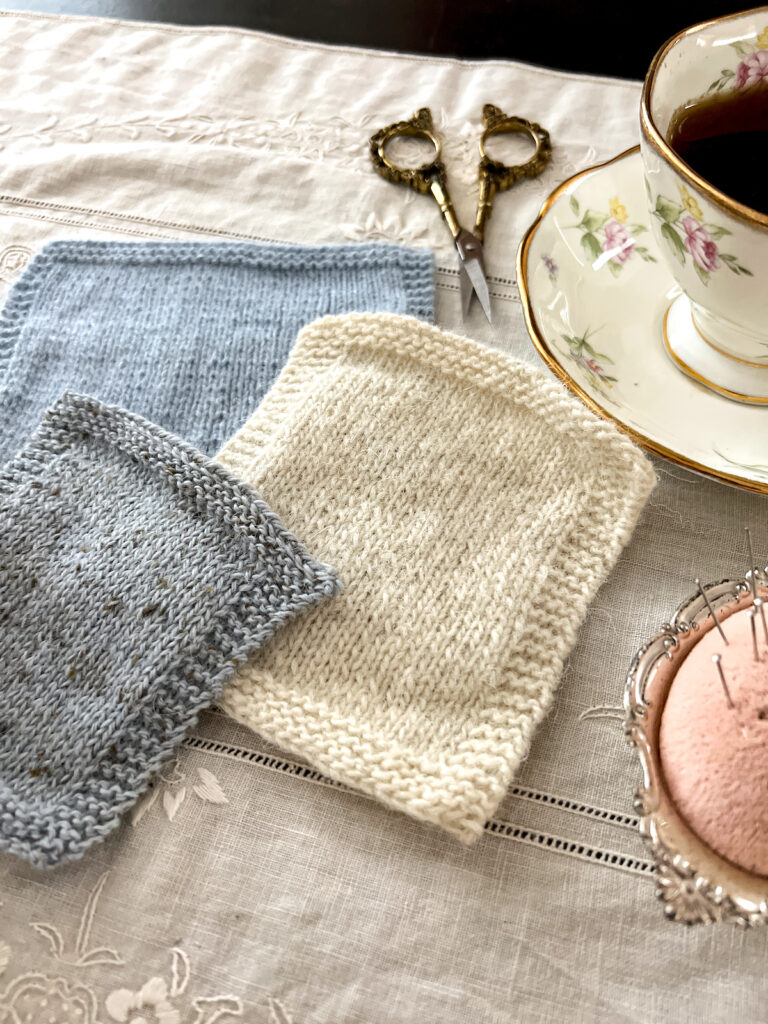
What Makes a Worsted Spun Yarn
A worsted spun yarn is not the same thing as a worsted weight yarn. Worsted-spun yarns have a particular construction, while worsted weight refers to the thickness of the yarn itself.
Worsted spun yarns have an additional stage of fiber preparation before the fiber is spun into yarn. During this process, the fiber is combed and straightened in a way that causes the fibers to line up parallel against each other very tightly. If woolen spun yarns have a lot of air in them, worsted spun yarns have almost no air inside them, thanks to this process that tightly compacts the fibers.
A worsted preparation will therefore result in a yarn that is smooth, tight, and shinier than than a woolen spun yarn. Like a woolen spun yarn, worsted spun yarns will usually be plied together, which will make for a very durable yarn. If you choose a woolen spun yarn made from one of the types of wool with a longer staple length and then spun up with multiple plies, you’ll have a very sturdy yarn indeed. Bonus: it has great stitch definition.
If a pattern calls for worsted yarn, but doesn’t specify whether it’s referring to weight or construction, it is probably referring to weight. You can confirm by looking up the specific recommended yarn, seeing what size needles are recommended, or checking in with others who have knit the same pattern.
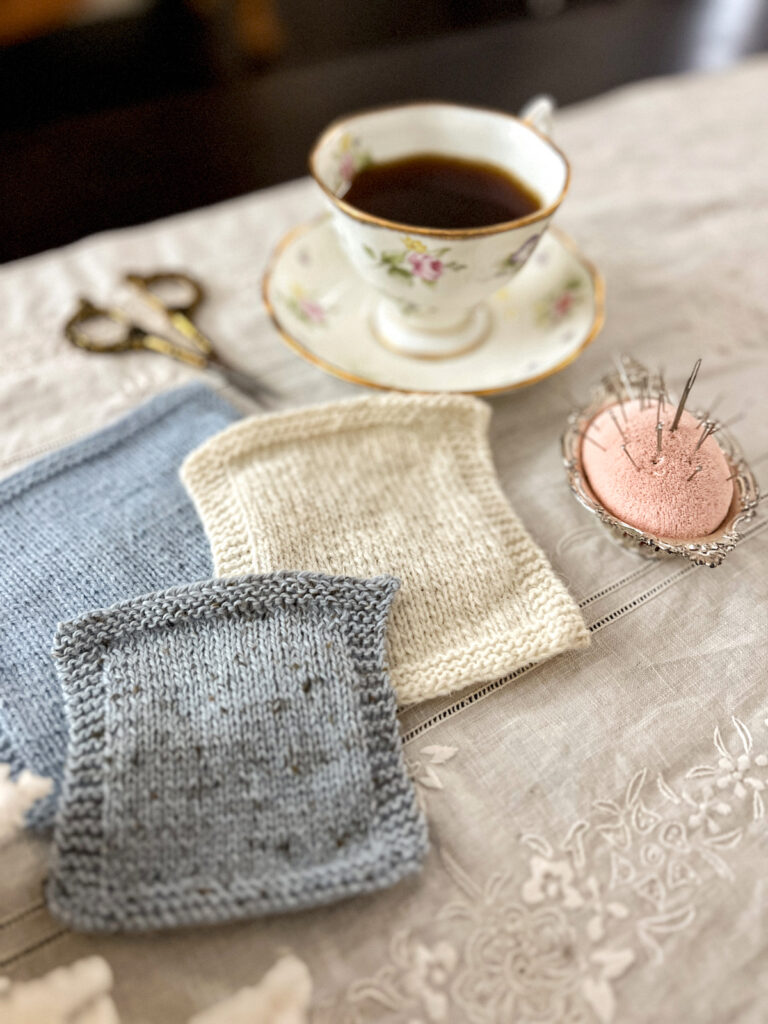
What Makes a Single Ply Yarn
Both of the yarns we’ve covered so far usually have at least two plies of yarn that twist around each other. Single ply yarns, however, only have one ply of yarn. A single-ply yarn can be either woolen spun or worsted spun, but a worsted spun single-ply yarn will be more durable because the fibers have been packed together more tightly.
How to Spot Each Kind of Yarn
If you’re looking at an already finished knit garment, look for the stitch definition and fuzz factor (that’s a technical term). Fuzzier knits are more likely to involve woolen yarns, though bear in mind that fiber content can also play a role in fuzziness. A very smooth knit will almost assuredly be a worsted-spun yarn.
If you’re looking just at yarn, check out how the plies look as you pull them apart and how the finished yarn looks all together. A worsted-spun yarn will be smooth and shiny, with very little fuzz sticking out. A woolen-spun yarn will look a little bumpier, have more of a matte finish, and will have some fibers sticking out for more of a halo effect. A single-ply yarn will only have one ply, regardless of whether it’s woolen spun or worsted spun.
Check out the three swatches in the photos that accompany this post. The blue swatch features a worsted-spun cashmere yarn, the white is a single-ply wool, and the gray is a woolen-spun wool tweed. Each was knit on the same size needles so you can more easily see the variations in how the yarn constructions knit up.
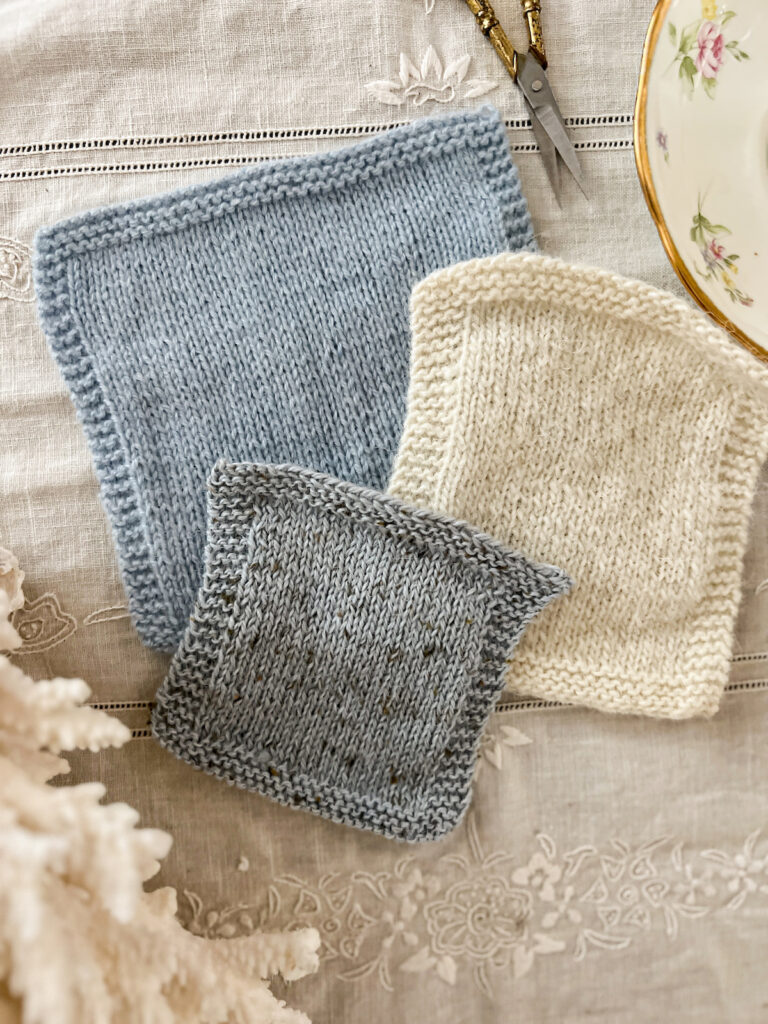
When to Choose Each Type of Yarn
When you want a yarn with better stitch definition or a very durable construction, choose worsted-spun yarn. The multiple plies of yarn that have been combed smooth before spinning will give you yarn that is good for patterns with strong dimensional effects, like cables. The worsted style yarn is also good for garments or accessories where you want good drape, like a shawl or lace projects. This is also a good choice if you want a yarn with less air in it.
Woolen-spun yarns, on the other hand, are popular for knits where you want a little fuzziness but still need some durability. Colorwork or fair isle knitting is often worked in a woolen-spun yarn, and specifically, in nonsuperwash woolen-spun yarns. The woolen style gives the yarn some grippiness, which helps prevent the images from getting distorted as the yarn stretches with wear and washing. The fluffy wool in many woolen spun yarns is extra squishy, too, which many people find comforting.
Finally, a single-ply yarn is good for projects that don’t get a lot of friction while you’re wearing them. Think hats, scarves, and mitts for single-ply yarn. That’s because these yarns are more fragile, so will tend to wear out more easily with lots of rubbing. They can feel wonderfully soft, though, so are often an excellent choice for projects that come into contact with the more sensitive skin on our necks or faces.
—
Armed with this information, you can now choose a yarn that’s better suited to your particular needs. Have fun and knit on!
Let’s stay connected!
Join my newsletter for 30% off all new releases, regular updates with helpful tips and tricks, first crack at registration for upcoming workshops, exclusive discounts, and more.
Join the A Bee In The Bonnet Facebook Group to participate in knitalongs and other fun community events
Come hang out with me on the A Bee In The Bonnet TikTok
Follow along on the A Bee In The Bonnet Instagram
Get inspired via the A Bee In The Bonnet Pinterest

